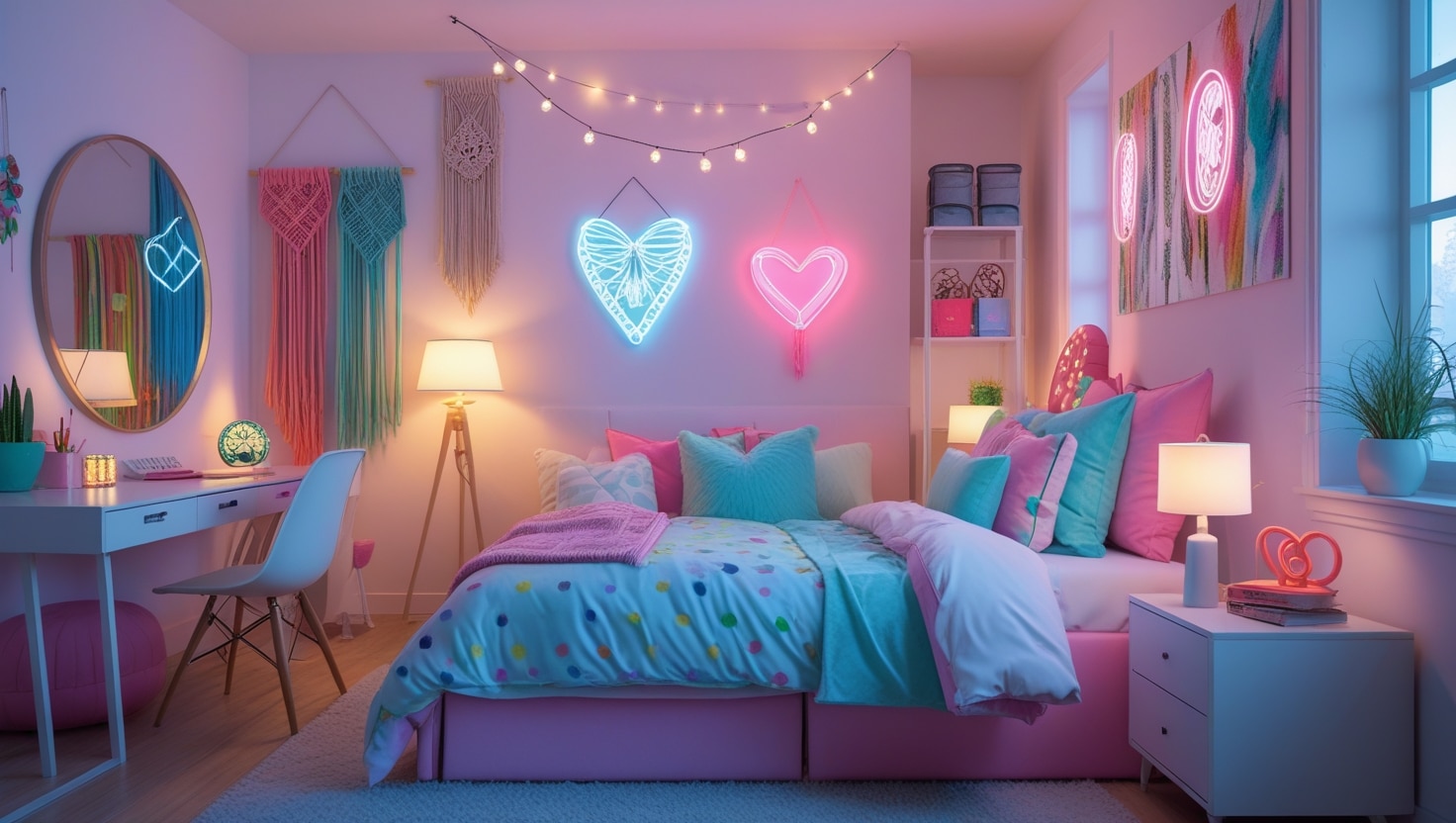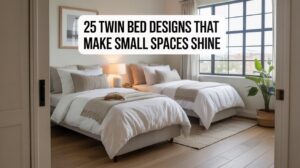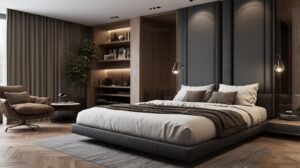Designing a teen bedroom is no simple task. Gone are the days of slapping some posters on the wall and calling it done. Today’s teens have sophisticated tastes influenced by social media, global design trends, and their own evolving identities.
I’ve spent years helping families transform teen spaces from chaotic dumping grounds to stylish sanctuaries. Trust me when I say that the right bedroom design can actually improve your teenager’s mood (and maybe even get them to hang out with the family occasionally).
Let’s dive into 30 ideas that strike the perfect balance between trendy and timeless, expressive and practical. These concepts will help create spaces where teens can study, socialize, and recharge—without breaking the bank or creating something they’ll hate in six months.
1. Multifunctional Furniture That Grows With Them
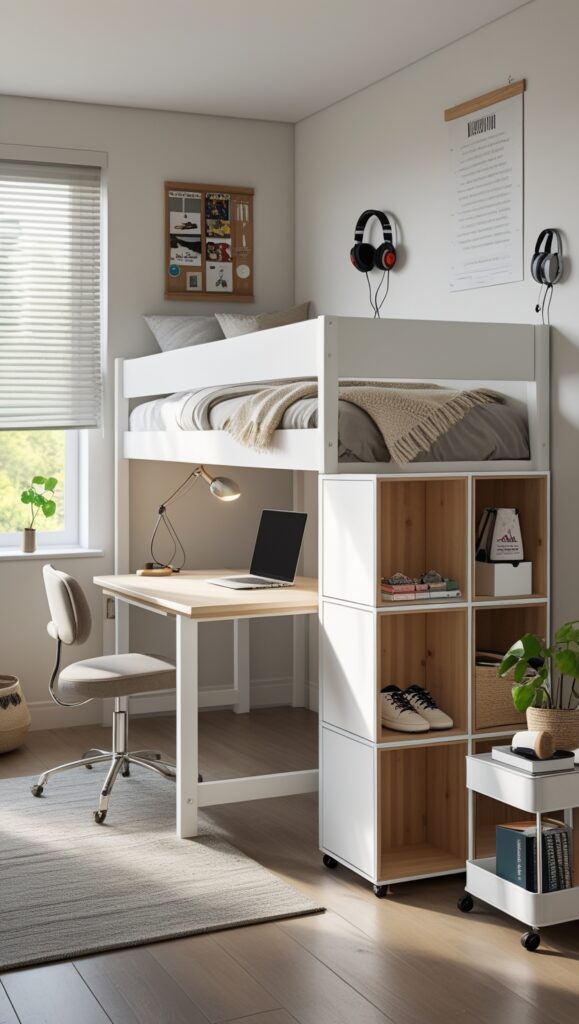
Teenagers’ needs change faster than their social media feeds. Investing in adaptable furniture pieces is both practical and smart for the long haul.
Consider a loft bed with a desk underneath—instant study zone that saves precious floor space. Many companies now offer modular systems where components can be reconfigured as needs evolve. My client’s daughter Zoe absolutely loved her desk-bed combo, which gave her room for both late-night studying and hanging out with friends.
The key is choosing pieces with clean lines and neutral bases that can handle changing decor around them. Avoid anything too juvenile or trendy in the big-ticket items; save those style statements for accessories that are easier (and cheaper) to swap out.
2. Bold Accent Walls That Make a Statement
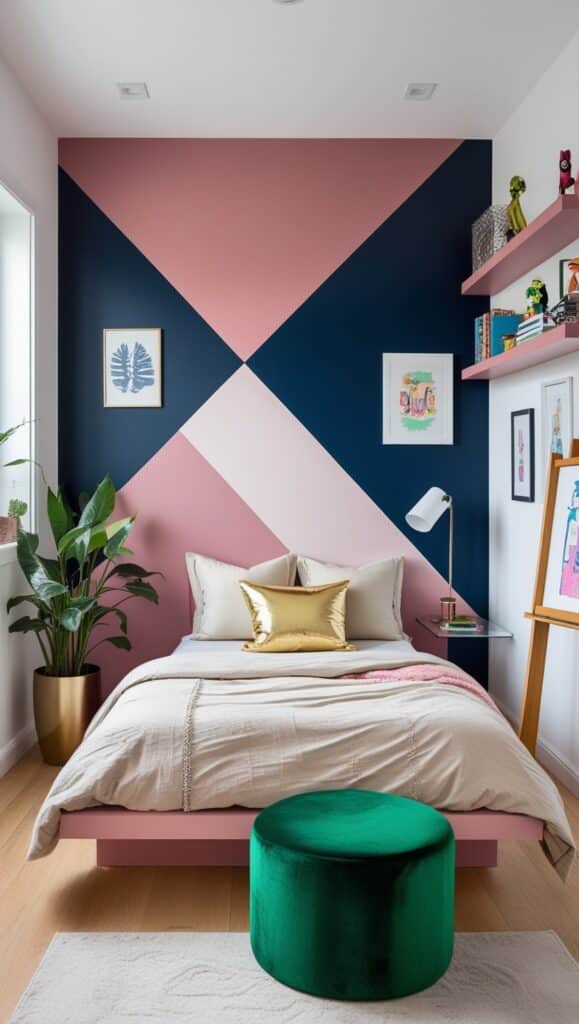
Nothing transforms a space faster than a single wall of color or pattern. Accent walls are the perfect compromise for teens who want drama without overwhelming the space.
Geometric patterns created with painters tape are incredibly popular now, allowing teens to customize their look inexpensively. I’ve seen amazing results with ombre effects that fade from ceiling to floor. Some of my bravest clients have even let their artistically-inclined teens paint murals that reflect their personalities.
If painting isnt an option in your living situation, removable wallpaper has come a long way in recent years. The designs available now are absolutley stunning, from abstract patterns to photographic nature scenes that create immersive environments.
3. Tech-Integrated Nightstands
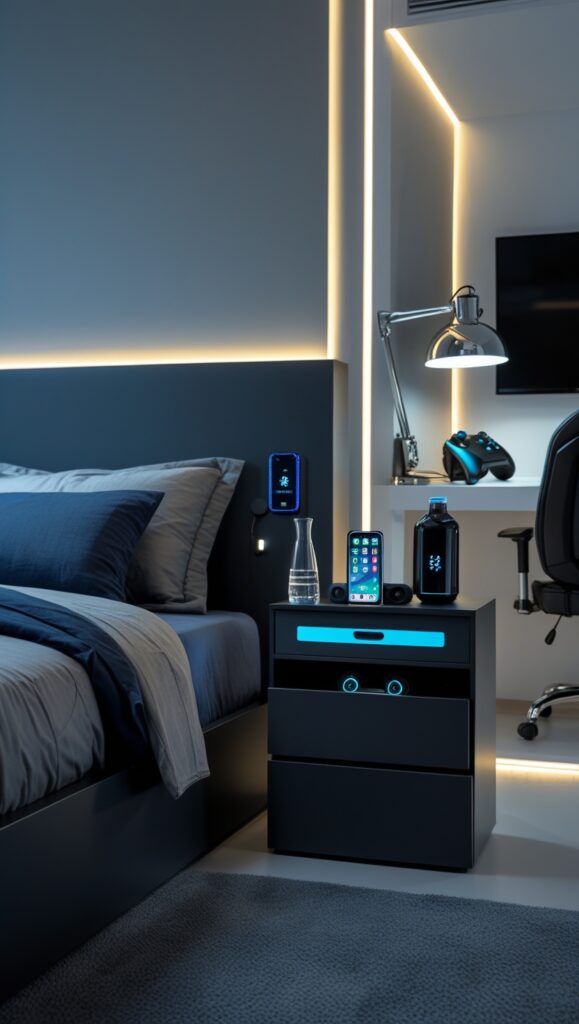
Let’s be honest—trying to separate teens from their devices is a losing battle. Instead, lean into it with nightstands designed for our connected world.
Look for options with built-in USB ports and wireless charging pads to eliminate the tangle of cables that inevitably accumulate. Some newer models even include bluetooth speakers or smart home hubs. My son’s nightstand has a hidden compartment for storing his headphones and game controllers, which has been a game-changer for keeping things tidy.
The best designs blend technology seamlessly with style, looking like normal furniture pieces until you notice their clever functionality. This balance of form and function is what makes these pieces worth the investment.
4. Hangout Zones Beyond the Bed
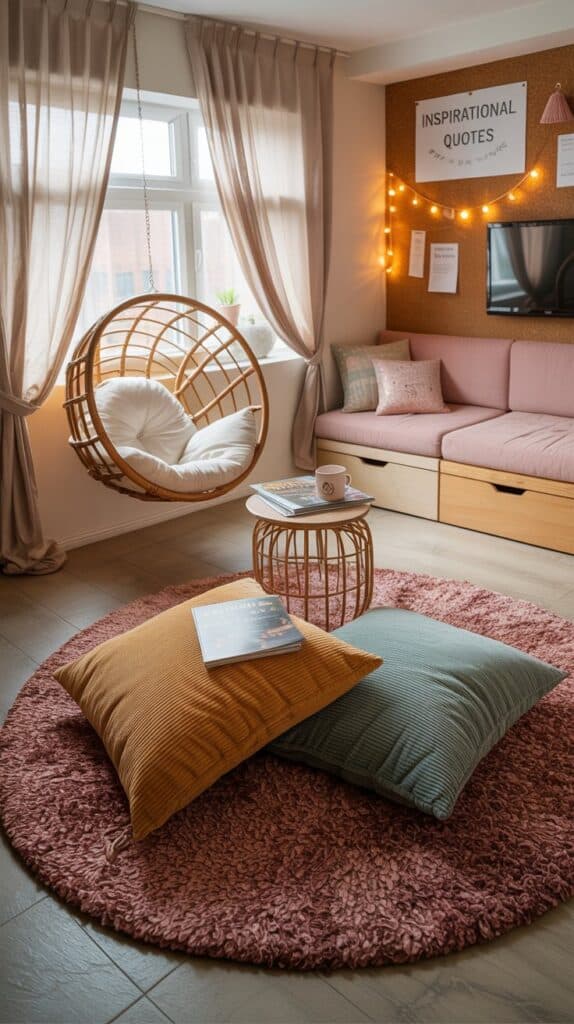
Teens need spaces to socialize that aren’t just their beds. Creating a designated hangout area makes their room more versatile and inviting.
Floor pillows arranged around a low table create a casual lounge vibe that teens love. Suspended chairs like macramé swings or bubble chairs add major style points while giving them a cool spot to read or scroll through social media. One family I worked with installed a window seat with storage underneath, which quickly became their daughter’s favorite spot for both quiet reflection and FaceTiming friends.
These secondary seating options are crucial for mental health too, helping teens mentally separate sleep spaces from social and study areas. Plus, it gives their friends somewhere to sit when they come over besides that messy bed!
5. Personalized Gallery Walls
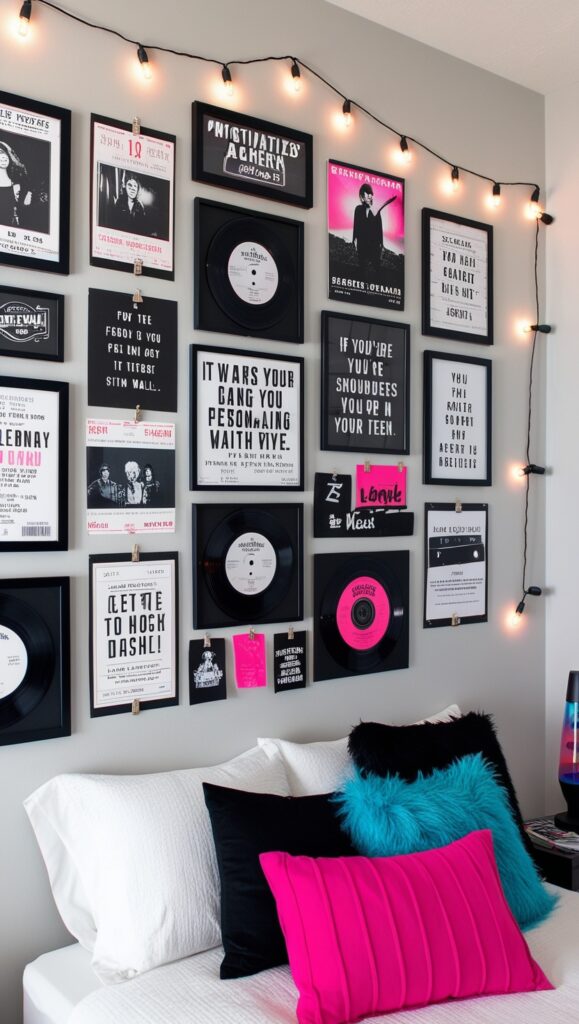
Gallery walls allow teens to display their evolving interests without the chaos of posters taped everywhere. This curated approach looks intentional rather than messy.
Help them mix framed photos with art prints, concert tickets, and small mementos in matching frames. The key is creating a cohesive look through consistent framing or color scheme while allowing plenty of personality to shine through. My client’s son Blake combined his photography with vintage album covers and skateboard decks for an incredibly unique display.
The best part about gallery walls is there adaptability—teens can easily swap out contents as their interests change without needing to redesign the entire room. Just be sure to use proper hanging hardware to prevent damage to walls!
6. Lighting Layers for Different Moods
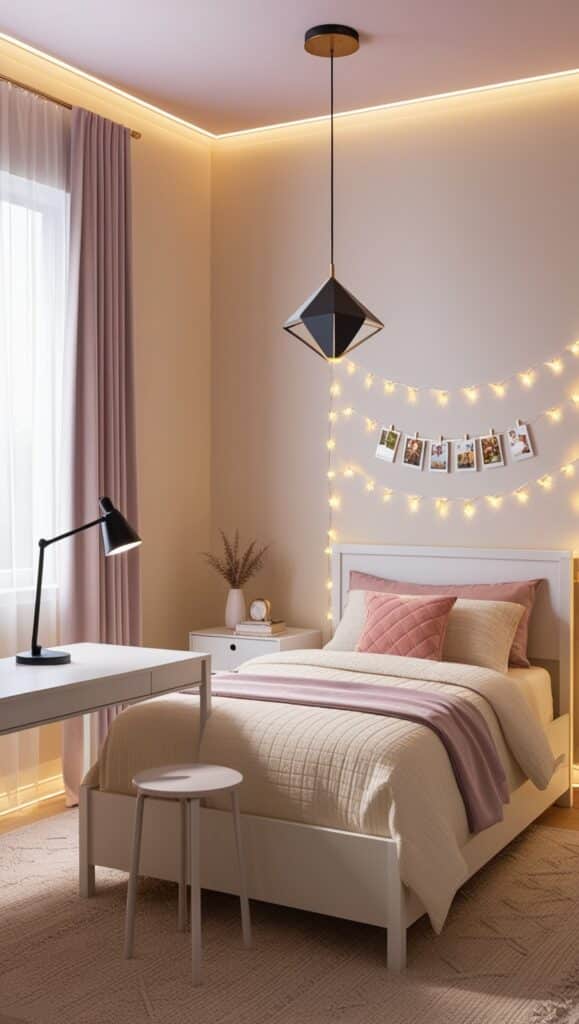
Teenagers use their rooms for everything from studying to socializing to sleeping, and lighting needs to adapt accordingly. A single overhead light just doesn’t cut it anymore.
String lights remain wildly popular and create the perfect ambiance for relaxing or hanging out. LED strip lights that can change colors via remote or app let teens match lighting to their mood. I always recommend including a good task lamp for homework and a bedside reading light at minimum. My daughter’s room features a stunning pendant light with a dimmer that serves as both practical lighting and a statement piece.
Remember to consider natural light too—window treatments that can fully block light for sleeping in on weekends but open completely for studying are ideal for teen spaces.
7. Vertical Storage Solutions
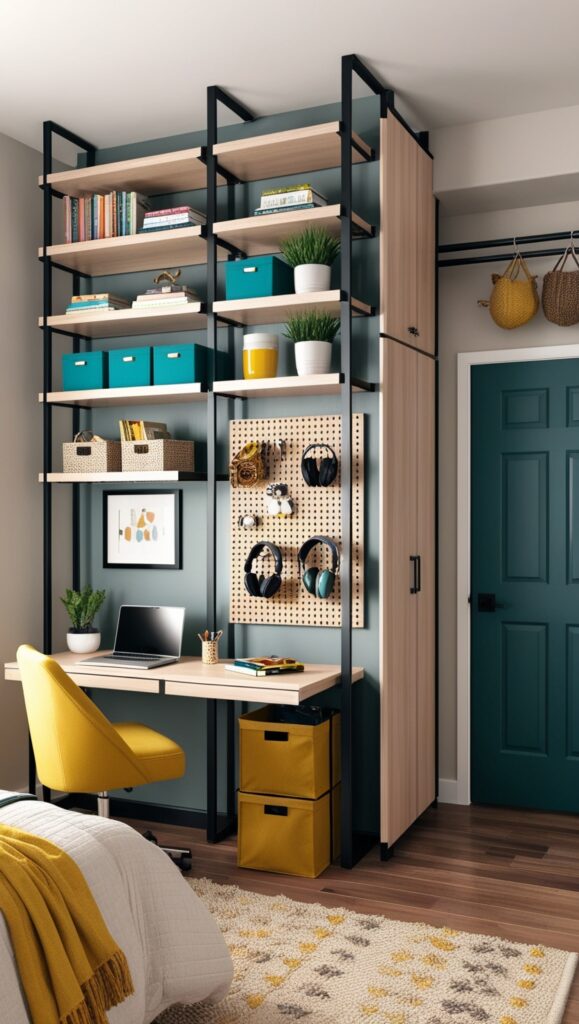
Teenagers accumulate stuff at an alarming rate. Maximizing vertical space helps contain the chaos without sacrificing style or floor space.
Wall-mounted shelving systems can be configured to suit any space and need. Floating shelves display treasured items while keeping them out of the way. One family I worked with installed a grid wall system that their daughter could customize with different hooks, baskets, and shelves as her storage needs changed.
Don’t forget the back of doors and inside closets as prime storage real estate. Over-door organizers and closet systems have come a long way stylistically and can hide a multitude of clutter while keeping daily essentials accessible.
8. Sustainable Materials and Vintage Finds
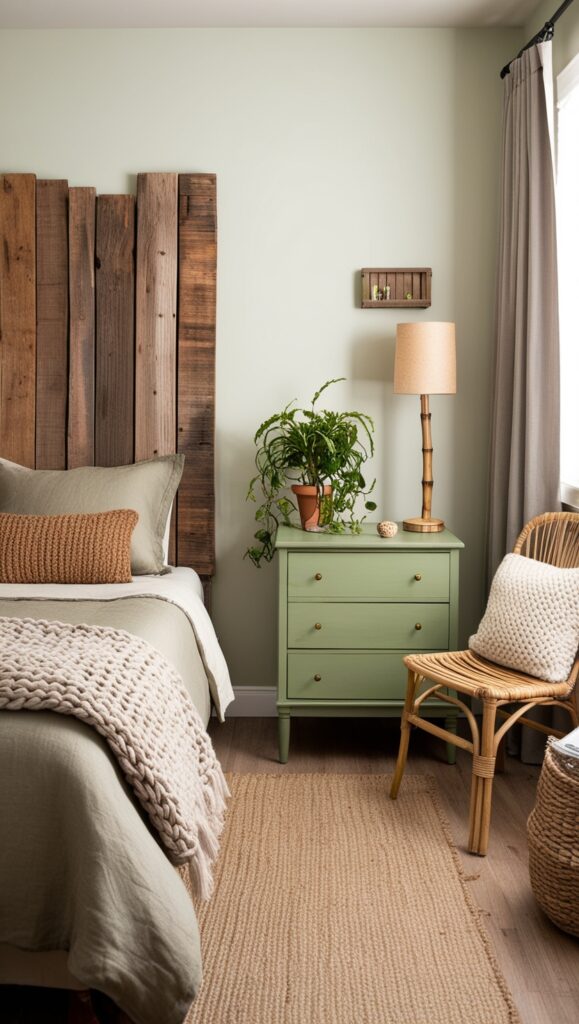
Today’s teens are more environmentally conscious than previous generations. Many actively seek out sustainable options for their spaces.
Incorporating vintage furniture pieces not only adds character but reduces environmental impact. Natural materials like rattan, bamboo, and unfinished woods bring warmth and texture while remaining eco-friendly. I helped one environmentally-minded teen create a stunning headboard from reclaimed wood that became the centerpiece of her room.
Thrift store furniture can be transformed with non-toxic paints and new hardware for one-of-a-kind pieces that tell a story. These sustainable choices often become conversation starters and points of pride for conscientious teens.
9. Dedicated Study Zones
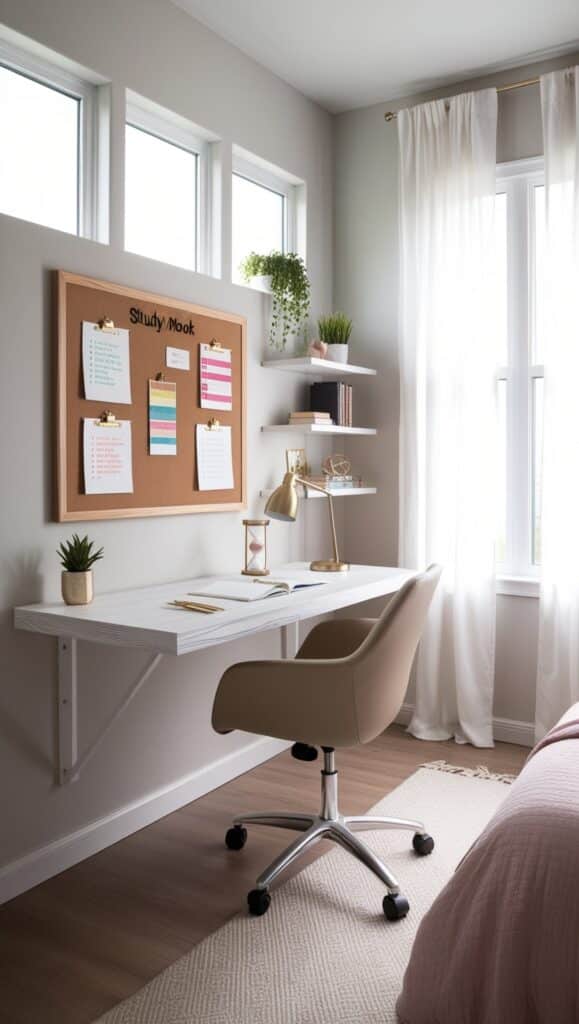
With academic pressures mounting, teens need well-designed study areas more than ever. These spaces should be distinct from relaxation areas when possible.
Look for desks with ample surface area and integrated cable management. Ergonomic chairs are worth the investment for growing bodies spending hours studying. Wall space above desks can host bulletin boards, calendars, or inspiration boards to keep teens organized and motivated. My client’s daughter transformed a closet into a “study nook” with a floating desk and strategic lighting that helped her focus away from distractions.
The most successful study zones balance functionality with personal style, ensuring teens actually want to spend time there. Little touches like a favorite plant or photo can make the difference between a desk that’s used regularly and one that becomes a dumping ground.
10. Statement Ceilings
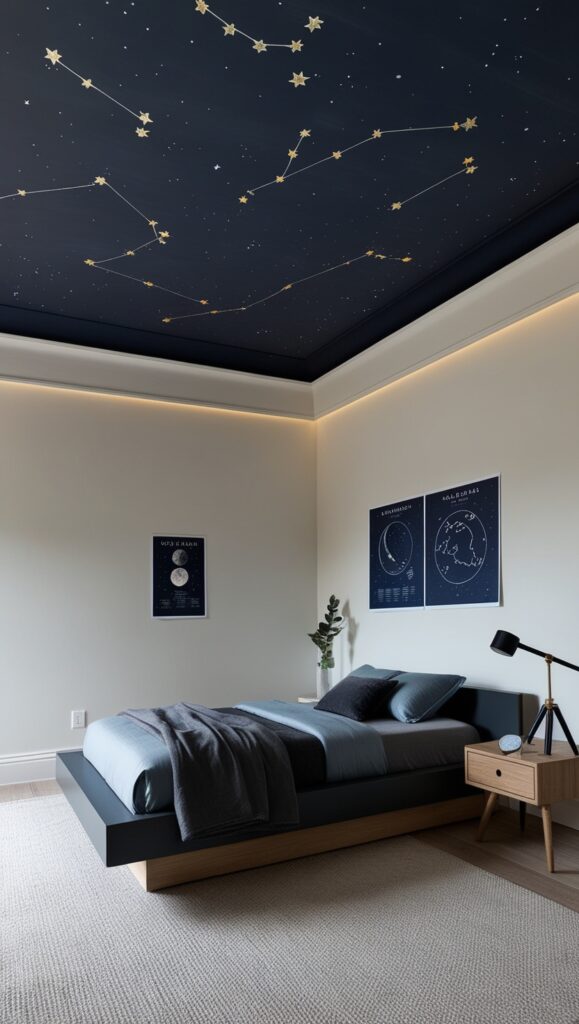
Why should walls get all the attention? The “fifth wall” offers amazing design potential that’s often overlooked in teen rooms.
Painted ceilings in contrasting colors or patterns create dramatic impact with minimal effort. Temporary wallpaper or decals can transform the ceiling without commitment. One particularly ambitious project involved painting a night sky with constellations using glow-in-the-dark paint—magical and educational!
This unexpected design element works especially well in rooms with high ceilings or loft beds, where the ceiling becomes a more prominent visual feature. It’s a guaranteed way to make friends say “wow” when they visit.
11. Hidden Storage That’s Actually Stylish
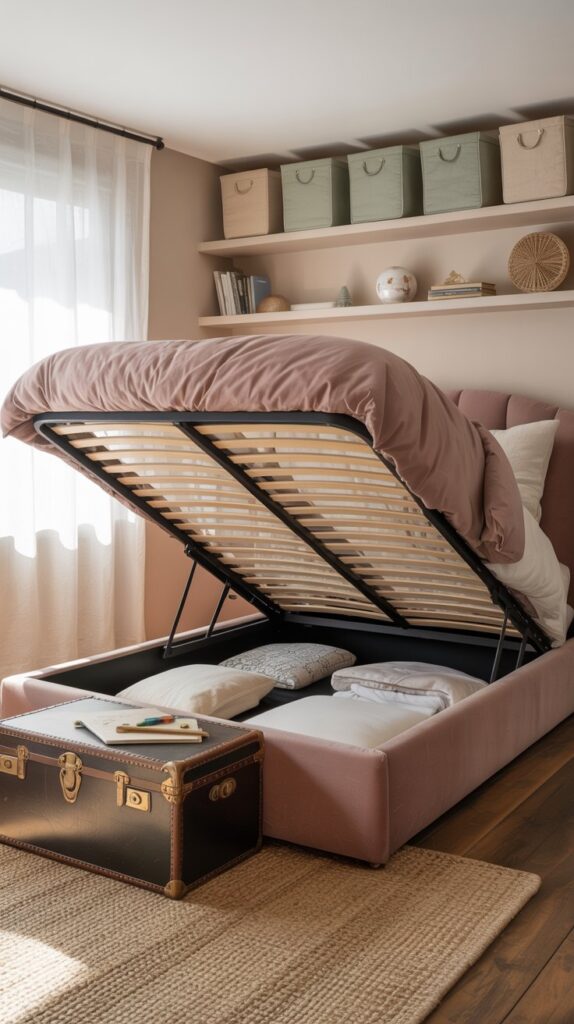
The days of shoving everything under the bed are over. Today’s storage solutions are clever enough to hide clutter while adding to the room’s aesthetic.
Ottoman beds with hydraulic lifts provide massive storage without sacrificing style or comfort. Decorative boxes and bins that coordinate with the room’s color scheme can house collections or seasonal items. I’m particularly fond of vintage trunks that serve as both storage and seating, adding character while concealing items teens don’t need daily access to.
The trick is creating systems that are easy to use—if accessing storage requires moving furniture or complex steps, it simply won’t get used by busy teenagers.
12. Zones Defined by Area Rugs
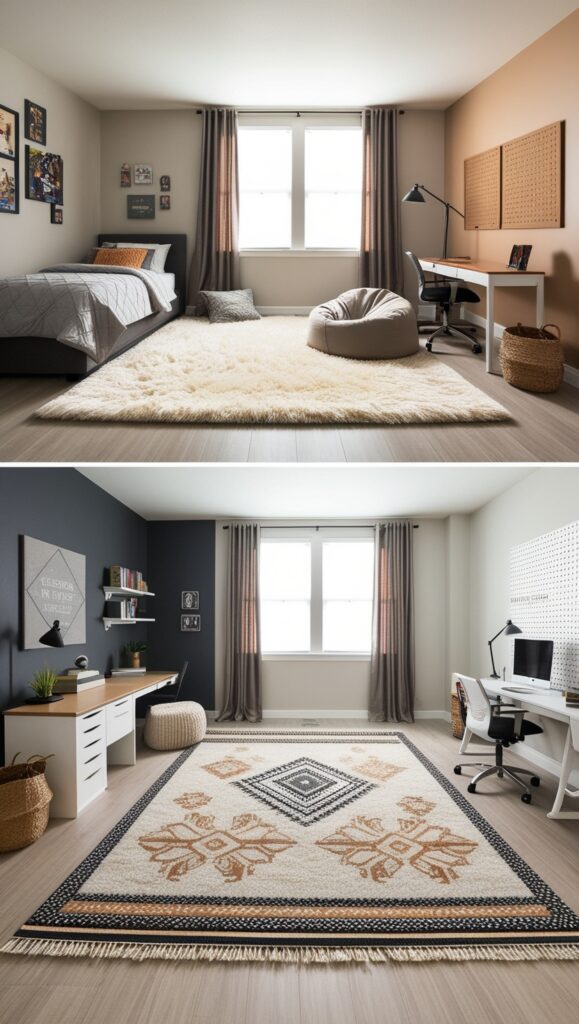
Open concept bedrooms benefit tremendously from visual definition between different functional areas. Area rugs create these boundaries without walls or bulky furniture.
A plush rug under a bed creates a cozy sleep zone, while a more durable option works well in study areas. Layering rugs adds texture and visual interest while clearly defining different spaces within the room. My favorite teen room makeover used three distinct rugs to create sleep, study, and hangout zones within a large bedroom, completely transforming how the space functioned.
This approach allows flexibility as needs change—simply moving rugs can redefine spaces without major renovation or furniture purchases. Plus, they add warmth and sound absorption, making rooms more comfortable overall.
13. Customizable Modular Wall Systems
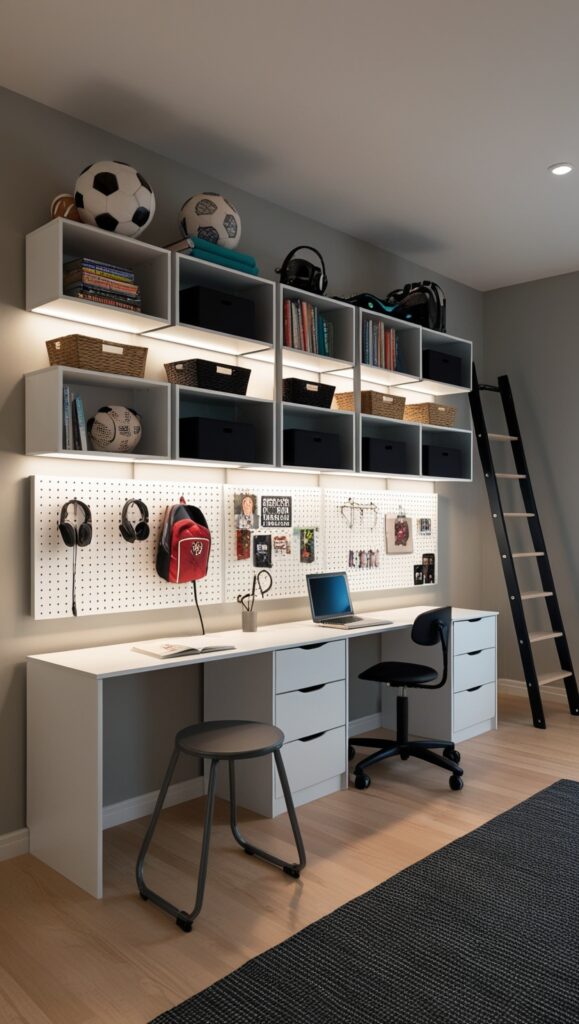
Teens value flexibility and personalization. Modular wall systems let them reconfigure their space as interests and needs evolve.
Track-based systems with interchangeable shelves, cabinets, and desks can be rearranged endlessly. Pegboard walls allow for frequently changing displays without damaging surfaces. One family I worked with installed a grid system that their son could reconfigure seasonally to display sports equipment, academic achievements, or his growing sneaker collection.
These systems grow with teens through high school and often college, making them practical investments with longevity beyond typical teen furnishings. The ability to customize gives teens agency over their space—something they crave at this age.
14. Dramatic Headboards as Focal Points
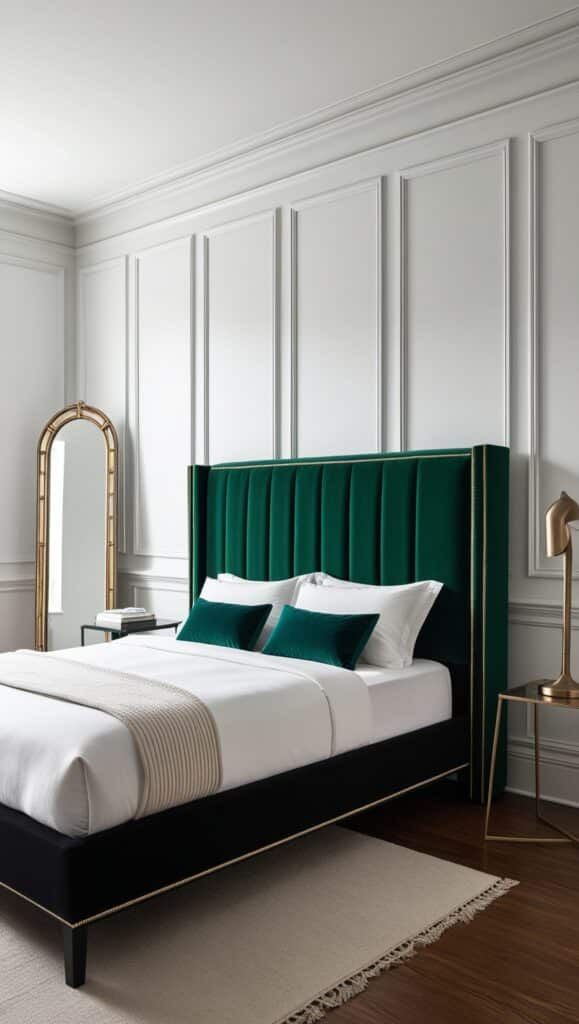
The bed is typically the largest piece of furniture in a teen’s room. A statement headboard turns this necessity into a design opportunity.
Upholstered headboards in bold fabrics add color and texture while providing comfortable back support for reading or scrolling. DIY options like painted wood pallets or fabric-wrapped plywood make big impact on small budgets. I’ve even seen creative teens use room divider screens or repurposed architectural elements as unique headboard alternatives.
The best headboards reflect personality while anchoring the room’s design scheme. Since they’re viewed primarily from within the room (unlike beds, which are often covered with blankets), they can be more expressively designed without creating visual clutter.
15. Smart Home Integration for Tech-Savvy Teens
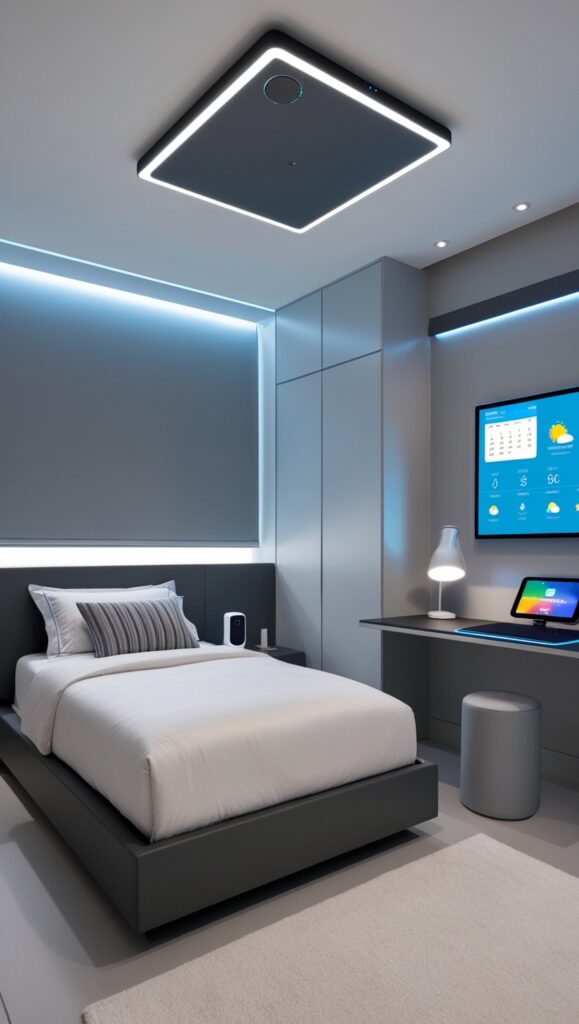
Today’s teenagers are digital natives who expect their spaces to be as connected as they are. Smart home features are increasingly accessible and teen-friendly.
Voice-controlled lighting, sound systems, and even window coverings add convenience and cool factor. Programmable LED lighting can create different scenes for studying, relaxing, or hanging out. I recently helped install a system that lets a teen control everything from his phone—he particularly loves setting his lights to gradually brighten as his morning alarm goes off.
These technologies can actually encourage responsibility too, with automated reminders and routines that help teens manage their own environments. Just be sure to discuss privacy considerations and set appropriate boundaries.
16. Indoor Plants for Natural Vibrancy
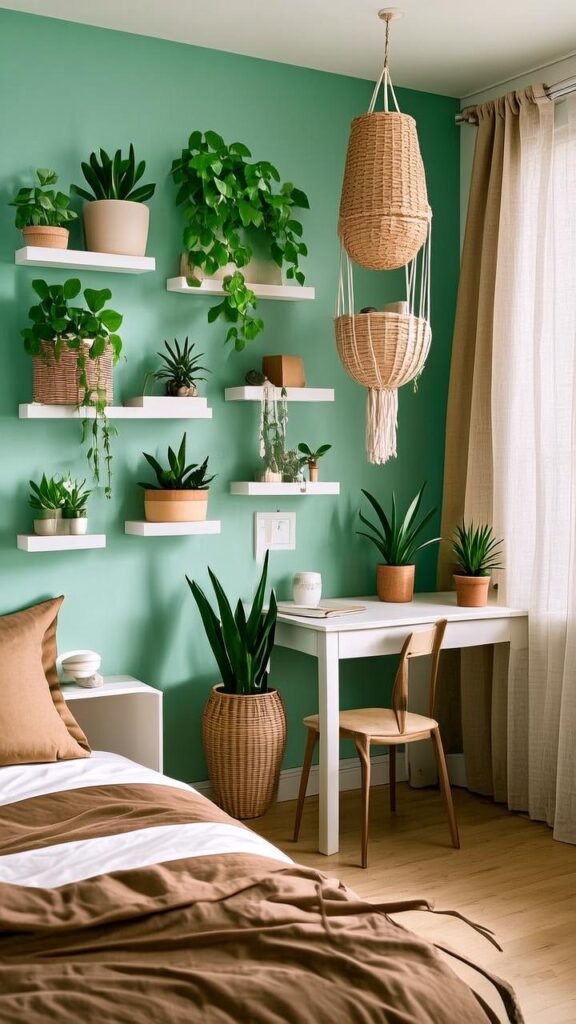
Plants bring life, color, and improved air quality to teen bedrooms. They also teach responsibility without the commitment of a pet.
Low-maintenance varieties like succulents, pothos, and snake plants thrive even with inconsistent teen attention. Hanging planters and wall-mounted options save precious surface space. One creative teen I worked with created a “plant wall” using adjustable shelving, creating a living piece of art that improved both aesthetics and air quality.
Beyond their visual appeal, caring for plants can be theraputic for stressed teenagers, providing a small but meaningful connection to the natural world. Start with one or two hardy specimens and let their collection grow with their confidence.
17. Creative Room Dividers for Shared Spaces
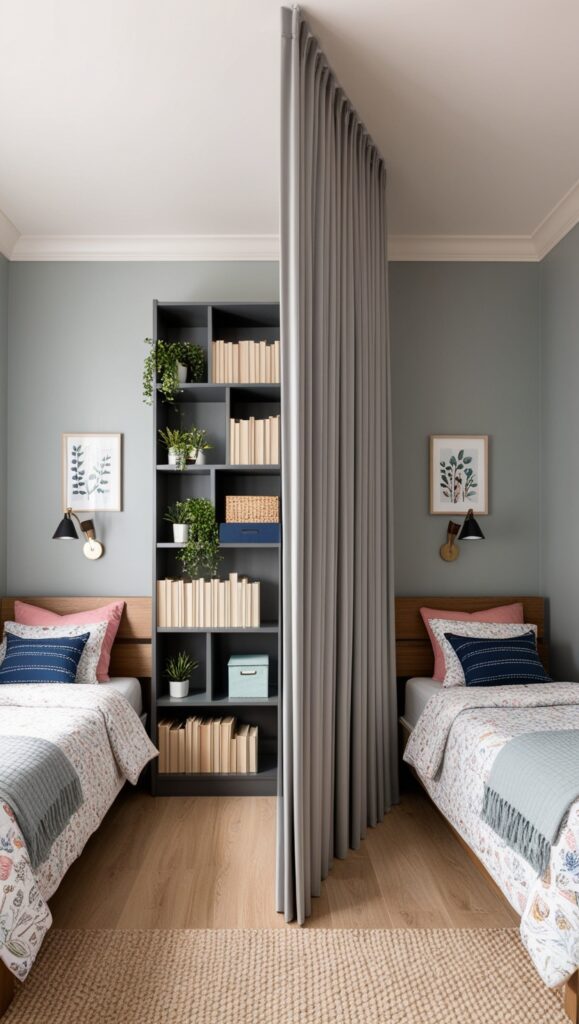
Siblings sharing rooms need defined personal territories. Modern room dividers create privacy without requiring structural changes.
Bookshelf dividers offer storage while separating spaces. Ceiling-mounted curtain tracks provide flexibility to open or close off areas as needed. I helped one family create a clever divider using a row of narrow wardrobes positioned perpendicular to the wall, giving each twin both privacy and additional storage.
The best dividers serve multiple purposes—providing visual separation, storage, and sometimes even decorative elements. For teens sharing spaces, these boundaries help prevent conflicts while respecting each person’s need for some privacy.
18. Unexpected Color Combinations
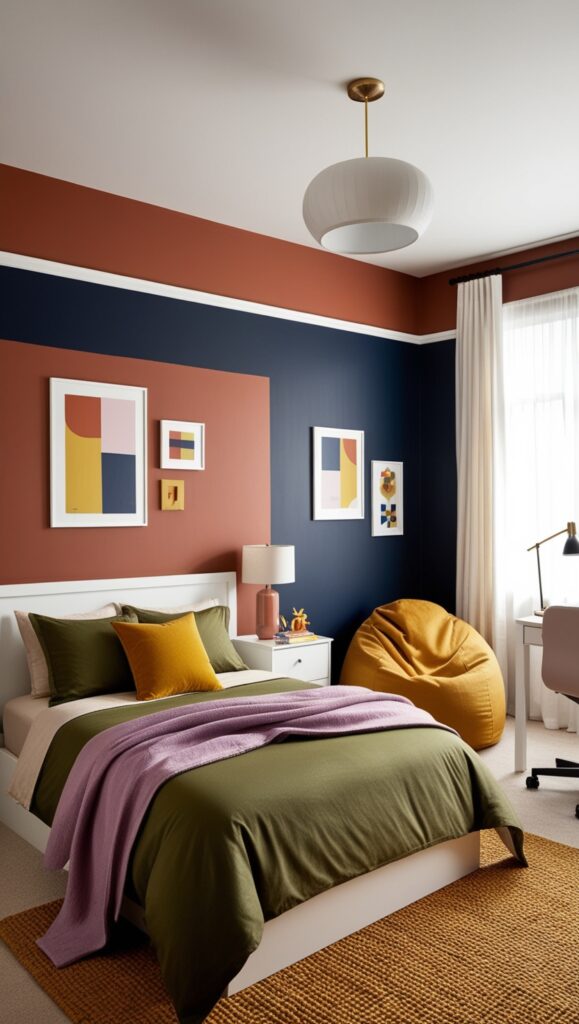
Teens love pushing boundaries, including with color. Unexpected combinations can create spaces that feel fresh and personally meaningful.
Current trends include pairing moody blues with warm terracottas, or sage greens with mustard yellows. Color-blocking walls creates dynamic visual interest without overwhelming the space. My client’s daughter chose lavender and olive green—colors no designer would typically combine—yet the result was surprisingly sophisticated and perfectly reflected her unique personality.
Don’t fear bold choices—just balance them with enough neutral space to let the colors shine without creating visual chaos. Paint remains one of the most affordable ways to dramatically transform a space.
19. Homework Stations Beyond the Traditional Desk
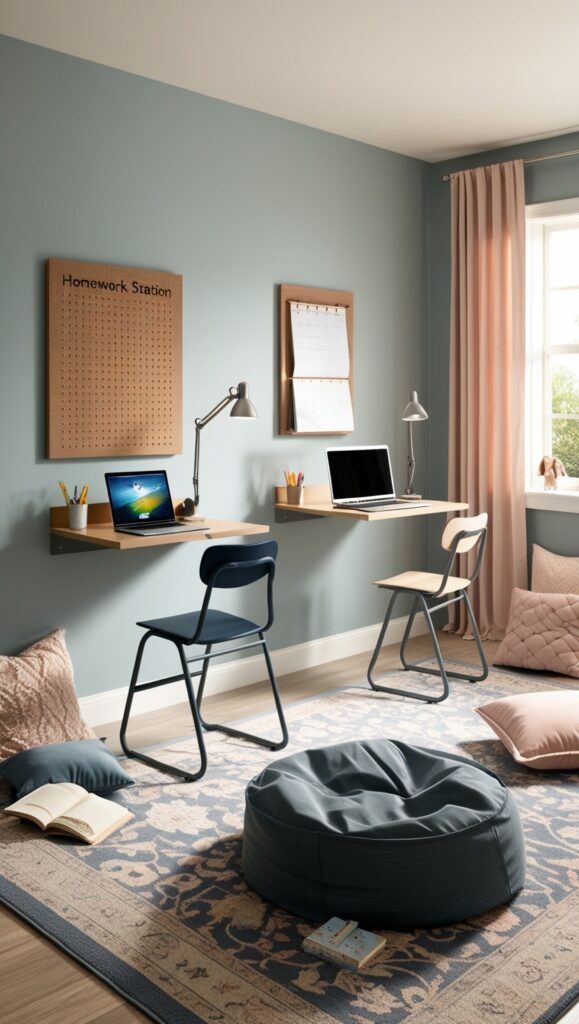
Not all teens work best at conventional desks. Alternative homework stations can better suit different learning styles and preferences.
Standing desks address the health concerns of too much sitting while providing energy outlets for fidgety teens. Floor desks with comfortable cushions appeal to teens who prefer more relaxed postures. One family created a brilliant solution with a wall-mounted drop-leaf desk that could be folded away completely when not in use, perfect for their teen who preferred to study on her bed most days but occasionally needed a proper work surface.
The goal is creating spaces that support focus and productivity while acknowledging individual preferences. Flexibility is key—especially for teens who may work differently depending on the subject or assignment.
20. Music Integration Beyond Speakers
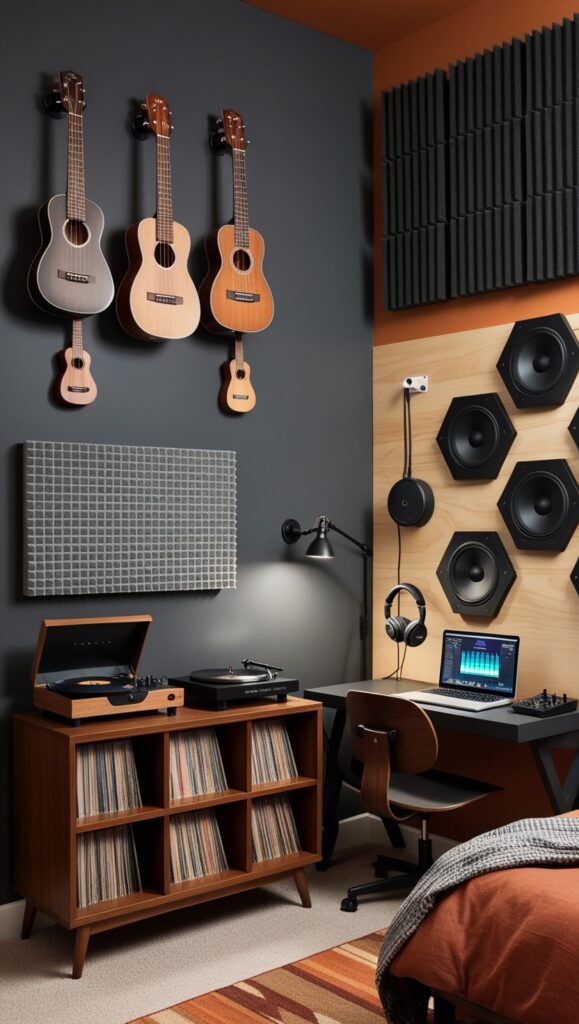
For music-loving teens, sound systems can be integrated into their room design rather than just added as an afterthought.
Wall-mounted instrument displays keep guitars and other instruments accessible while serving as room decor. Vinyl record storage and turntable setups create both a hobby space and visual feature. I worked with one family to create a small recording nook in their son’s room with acoustic panels that doubled as decorative elements, allowing him to pursue his music production interest without disrupting the household.
These music-centered features honor teens’ passions while encouraging screen-free creative pursuits—something many parents are eager to support.
21. Interactive Wall Features
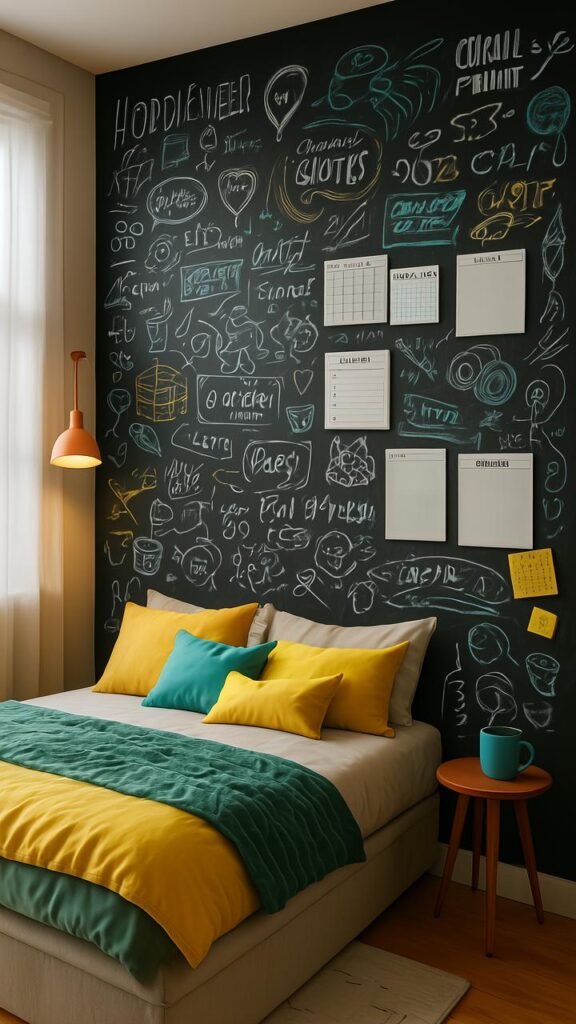
Static decor is giving way to interactive elements that teens can manipulate and personalize regularly.
Magnetic paint sections create changeable display areas. Writeable surfaces from whiteboard paint to glass panels encourage creativity and organization. My favorite implementation was a full wall covered in chalkboard paint where an artistically inclined teen created ever-changing murals that reflected her current inspirations.
These interactive elements support both creativity and functionality, giving teens a sanctioned place to express themselves without permanent consequences. They’re particularly valuable for visual thinkers who process information better when they can see it displayed.
22. Reading Nooks for Digital Detox
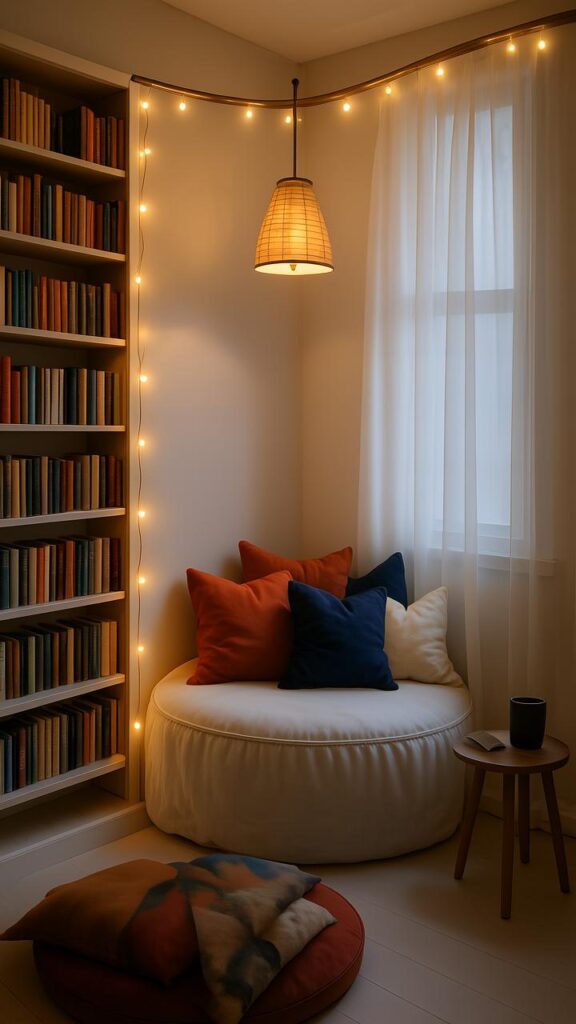
Despite digital immersion, many teens still appreciate dedicated spaces for reading and unplugging. Thoughtful reading nooks encourage this healthy balance.
Window seats with comfortable cushions and good lighting make ideal reading retreats. Canopy beds or hanging chair cocoons create psychological separation from the rest of the room. I created a corner reading nook using a curved curtain rod and floor-to-ceiling drapes, creating a tent-like space that became my client’s favorite homework spot because it helped her focus away from distractions.
These spaces often become favorite retreats during stressful periods, giving teens a designated place to decompress without screens. The physical boundary, however minimal, helps signal the brain to shift into a different, more contemplative mode.
23. Convertible Furniture for Small Spaces
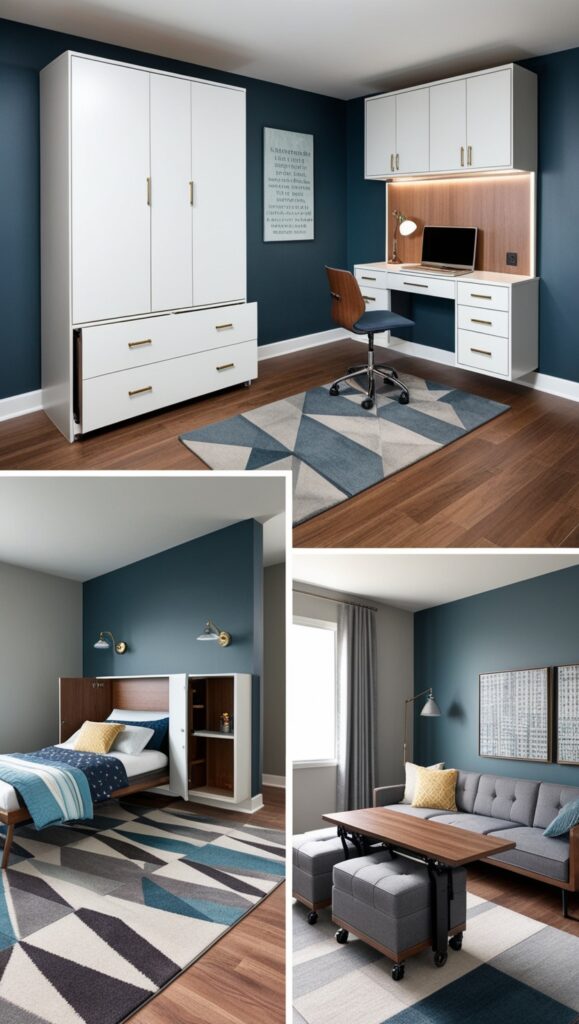
Many teens have smaller bedrooms that need to serve multiple functions. Convertible furniture maximizes functionality without sacrificing style.
Murphy beds that transform into desks or tables during the day reclaim valuable floor space. Modular seating that reconfigures from study setup to sleepover accommodation offers flexibility for varying needs. My client’s son used a transforming coffee table that raised to desk height, allowing his small room to function as both bedroom and gaming space without compromise.
These clever solutions teach teens about thoughtful space planning while giving them environments that adapt to their changing activities throughout the day and week.
24. Blackout Solutions for Better Sleep
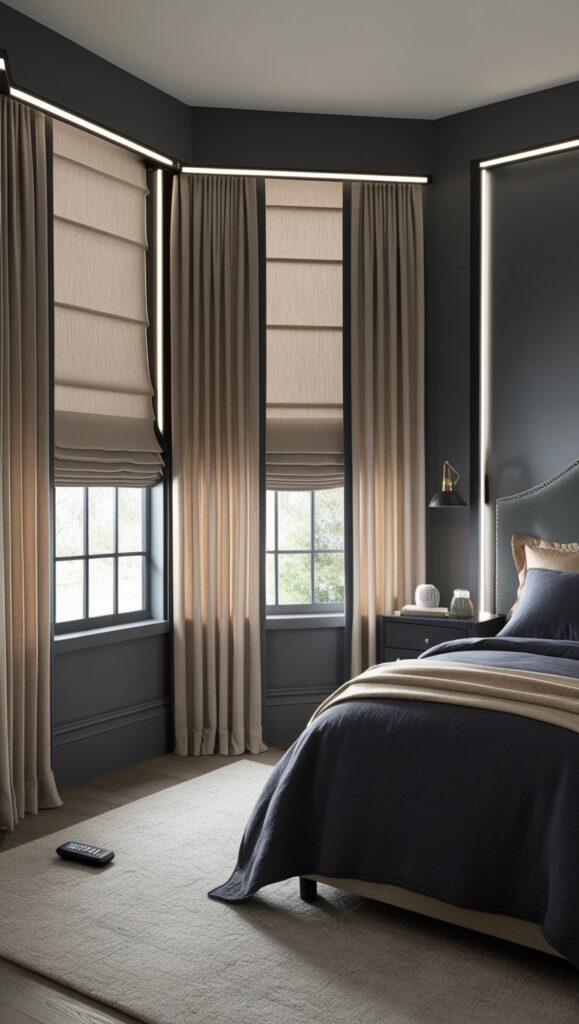
Teen sleep patterns and requirements make proper window treatments essential, not just decorative. Good sleep impacts everything from academic performance to emotional regulation.
Layered window treatments offer both light control and style. Motorized options add convenience and cool factor. I recommend dual systems—decorative curtains paired with functional blackout roller shades or liners—to provide both aesthetic appeal and practical light blocking when needed.
With teens’ already-challenged sleep schedules, creating a room that can be properly darkened is one of the most supportive things parents can do. The investment pays dividends in improved mood and function during waking hours.
25. Personal Expression Through Textiles
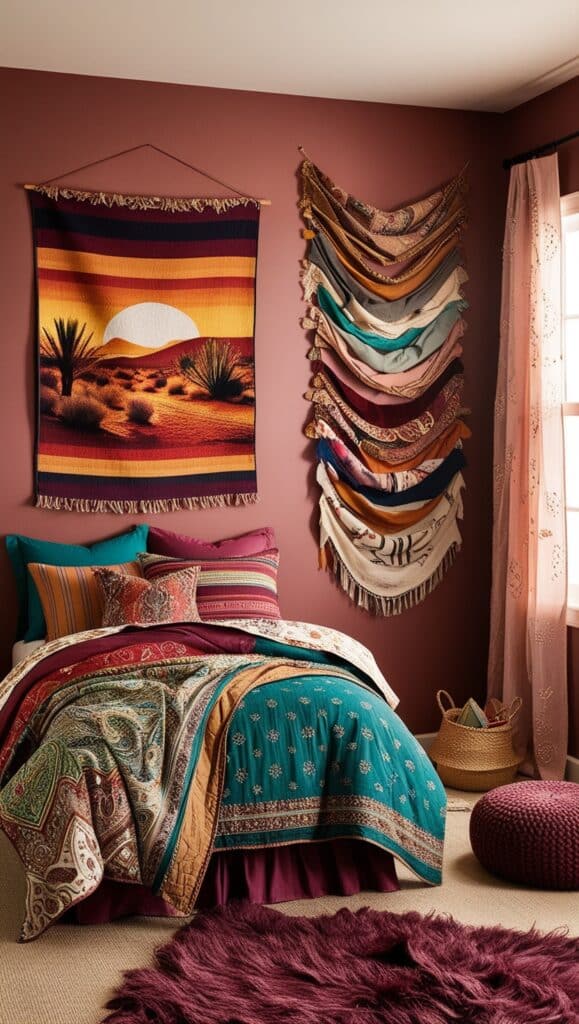
Textiles offer low-commitment ways for teens to express their evolving style without permanent changes or major expenses.
Layered bedding with mix-and-match patterns shows personality while remaining easily changeable. Tapestries and fabric wall hangings add color and texture without damaging walls. One teen I worked with collected scarves from her travels, which we displayed as a stunning wall installation that told the story of her adventures.
These fabric elements also improve room acoustics and add warmth, making spaces feel more comfortable and personal. They’re the perfect elements to hand over to teens for complete creative control.
26. Display Space for Collections and Achievements
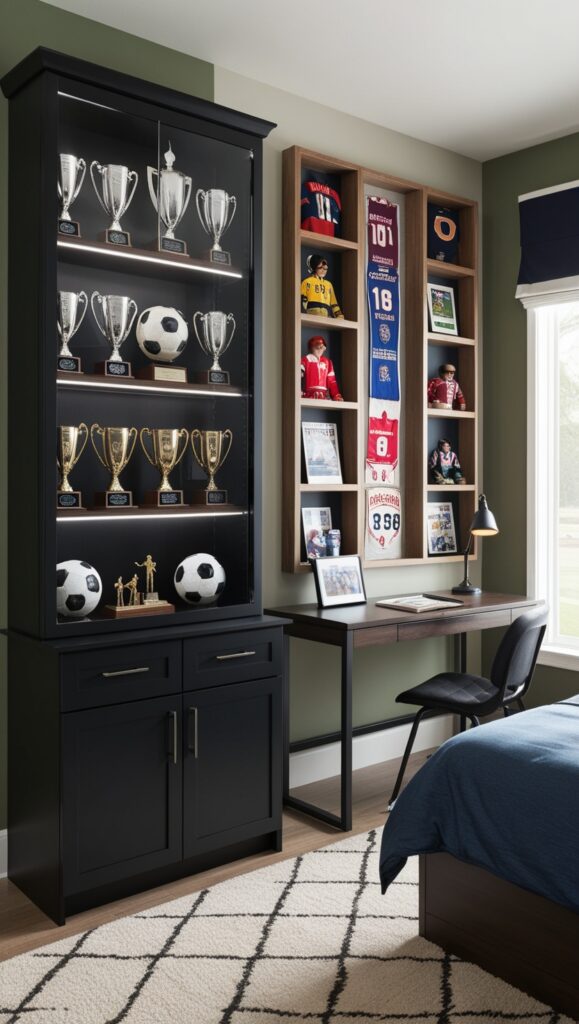
Teens need designated places to showcase the things that matter to them, from sports trophies to treasured collections.
Glass-front cabinets protect valuable items while keeping them visible. Floating shelves arranged in creative configurations offer flexible display options. I designed a modified shadow box system for a teen athlete that displayed her medals and competition bibs in a way that felt like sophisticated art rather than cluttered memorabilia.
These displays honor teens’ accomplishments and interests while keeping treasured items organized rather than scattered. They also create natural conversation starters when friends visit, helping teens share their passions and histories.
27. Graphic Elements and Typography
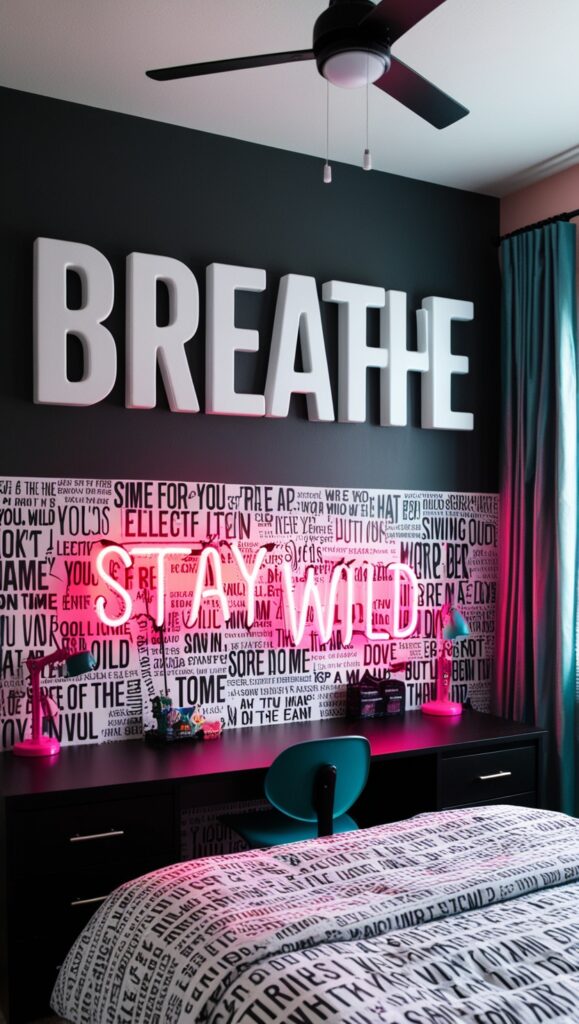
Typography and graphic elements add personality and energy to teen spaces without the permanence of more structural changes.
Oversized letters or words in dimensional materials make powerful statements. Custom neon signs or LED word art add both light and personality. My favorite application was helping a teen design a typographic mural featuring lyrics from her favorite songs, creating a deeply personal space that reflected her emotional connection to music.
These graphic elements can communicate values, aspirations, or simply favorite phrases, allowing teens to literally surround themselves with words that inspire or comfort them during these transformative years.
28. Creative Closet Transformations
Closets are often overlooked spaces with tremendous potential beyond simple storage. Reimagined closets can add functional square footage to teen rooms.
Removed doors reveal space for desks or vanities within former closets. Added lighting and paint turn storage spaces into design features. I helped one family convert an underutilized closet into a phone charging station and getting-ready space with a mirror, makeup storage, and dedicated outlets, freeing up the main bedroom for other activities.
These transformations are particularly valuable in smaller rooms or shared spaces where every square foot needs to work harder. They also teach teens to think creatively about space utilization—a valuable skill for future dorm living.
29. Ceiling-Mounted Elements
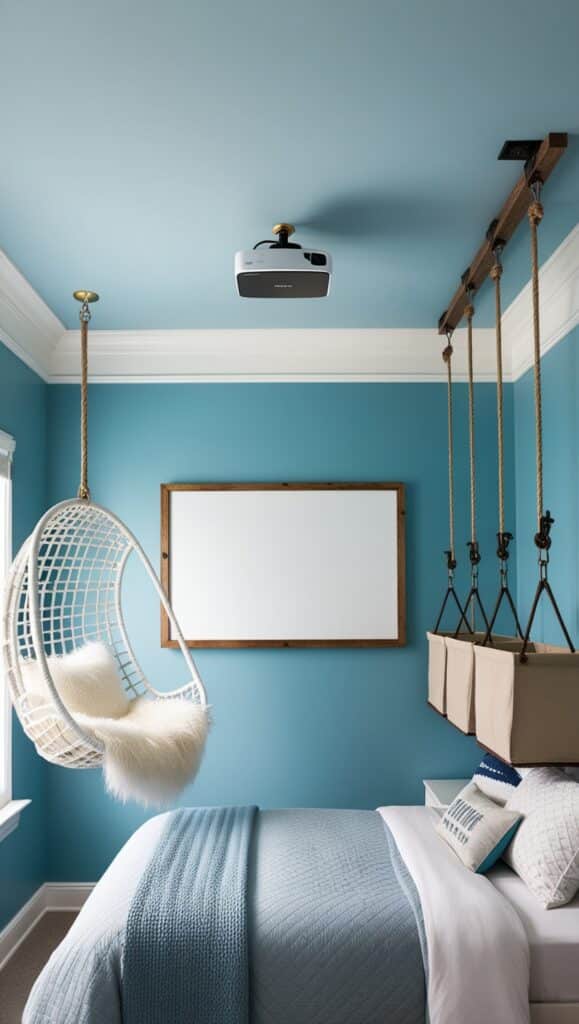
Looking up reveals untapped design potential in most teen rooms. Ceiling-mounted features add interest without consuming valuable floor space.
Suspended seating like hanging chairs or hammocks create fun relaxation spots. Ceiling-mounted projectors transform walls into movie screens or gaming displays. One particularly innovative solution involved ceiling-mounted storage bins on a pulley system, allowing seasonal items to be raised out of the way when not needed.
These unexpected elements add whimsy and surprise to teen spaces while demonstrating creative problem-solving. They’re particularly effective in smaller rooms where floor and wall space is already maximized.
30. Flexible Furniture Arrangements
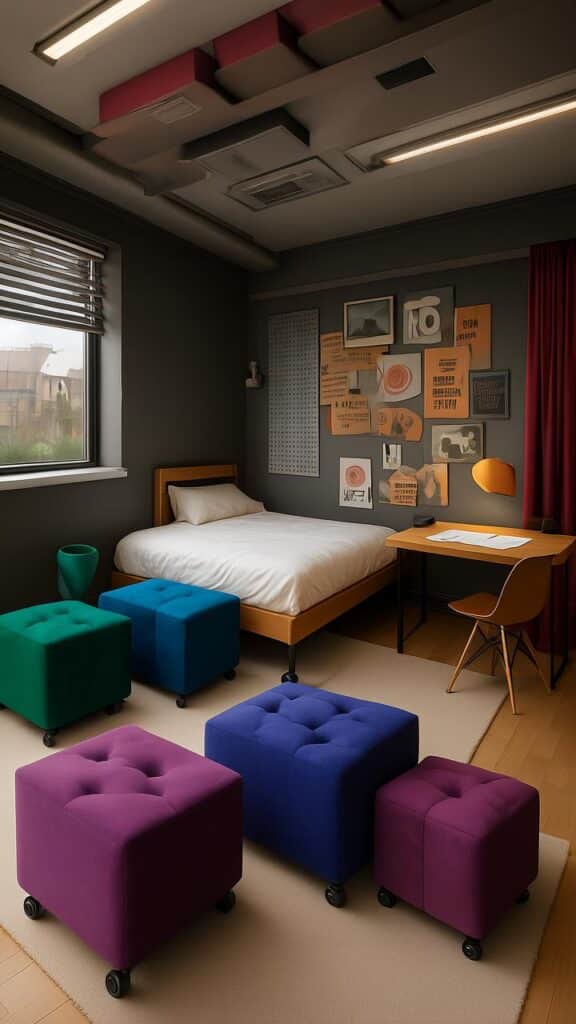
The ability to reconfigure spaces for different activities gives teens control over their environments and extends the functionality of their rooms.
Furniture on casters allows quick transformations from study space to hangout zone. Nesting tables and stackable seating expand when friends visit and contract for daily use. I designed a room with a central area that could accommodate a fold-out gaming table, meditation space, or extra sleeping area for overnight guests, all using the same flexible furniture pieces arranged differently.
This adaptability acknowledges the many roles teen bedrooms play—from private sanctuary to social hub to workspace. By embracing flexibility rather than fixed arrangements, these spaces can better support teens through their rapidly changing needs and social situations.
Creating the perfect teen bedroom isn’t about following trends blindly—it’s about balancing expression with function, current interests with longevity, and independence with practical limitations. The most successful spaces evolve alongside their occupants, providing both roots and wings during these transformative years.

John is the founder of Stylo Trackers, a fashion blog dedicated to inspiring confidence through style. With a passion for timeless trends and modern outfit ideas, he helps readers express their individuality effortlessly. From 90s fashion to the latest styling tips, John curates content that makes fashion fun, accessible, and inspiring for everyone who wants to dress to impress.

